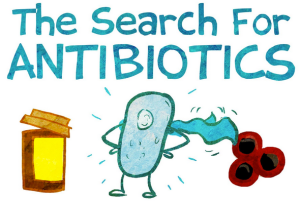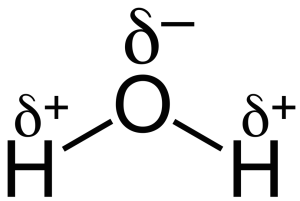I had quite a blast this week. The workload was chill despite having a plant exam last Wednesday that took me around three days to study since I literally had to take a break every 30 minutes. Joking aside, I’m incredibly happy that more than half of my batchmates ate at Sbarro in UP Town Center yesterday.
Yes, that’s right. 21 of us invaded and claimed dominion over that restaurant for more than an hour. I think the manager was very pleased to see that many customers in the morning.
As I was eating my slice of delicious pizza, I suddenly had the urge to share the things I’ve read about for the past few months. Perhaps it’s the rich variety of toppings that inspired me to blog about the latest life science related news. Maybe it’s just an epiphany via pepperoni. Nonetheless, I’m giving you a glimpse of Science in this short post. I’ve provided many clickables in order to keep this entry from becoming boringly long. Like a slice of pizza, I wanted to give an explosion of flavors in one tasty bite.
1.) Antibiotics as Anticancer drugs. In one of the most surprising news out there, a group of medical doctors tested the efficacy of antibiotics to treat cancer. This is rather counterintuitive because antibiotics specifically kill bacteria (duh). But because of a fortuitous side-effect of some antibiotics that prevent mitochondria production, cancer cells effectively get deprived of surplus energy to wreck havoc in the body. Hence, these cancer cells can’t live the thug life.
Here’s a cute video on antibiotics hehe
2.) Novel class of Antibiotics found. I’ve posted a link about this before but I didn’t expound much about it. The fact that they discovered a 100% effective antibiotic is newsworthy enough. These Scientists also figured out a way to grow previously “unculturable” bacteria in the lab. Their method is a conceptually simple one which I might discuss in a future blog (hehe)
3.) GMO Biocontainment. There’s whole host of people out there who hate GMOs with such fiery passion but don’t even know what the acronym means. If I get a coin every time I hear people say they don’t like food with chemicals, I’ll be drowning in money. If you don’t like food with chemicals, don’t eat at all because all food are made of chemicals (do me a favor and don’t breathe as well because air is made of chemicals too).
WARNING: 100% of people who have come in contact with dihydrogen monoxide has died. Drink dihydrogen dioxide instead as it has been proven to kill all bacteria.
Ranting aside, there is a very small chance that genetically modified organisms (take note h8trs) might exchange DNA with wild organisms thereby polluting the gene pool. Thus, a group of scientists created organisms that rely on synthetic amino acids for their survival. At any rate, it prevents modified organisms from surviving outside the lab where these nutrients are not supplied.
4.) Using Smartphones to diagnose HIV. The incidence of sexually transmitted disease is increasing worldwide. Perhaps it’s a function of increased promiscuity among the youth coupled with a reluctance to practice safe sex. I’m personally not an advocate of pre-marital sex but if you gotta do it, put some protection on that erection. I recently had dinner with a good friend from mass comm and damn, STD in the Philippines is frekin’ real. Many college people nowadays seem to be getting a lot of action too. The threat is very real.
My friend gave me this sticker yesterday. I don’t know why but now I understand that it was destined for this blog
While a cure for HIV is probably decades away (’cause viruses are fucking crazier than kids on weed), at least we can prevent HIV from spreading by detecting them early on. This piece of tech is promising but the 14% false alarm rate is pretty insane. In a group of 100, you can get 14 people to think they’re HIV positive even if they’re not. Imagine the stress these unfortunate souls will get. However, I’m confident that bioengineers will be able to improve on this technology and increase the accuracy of the device.
5.) Photosynthesizing sea slugs. I know what you’re thinking; this is damn crazy to be true. But apparently, these critters have been known to bask in the summer sun since their discovery in the 70s. I’m sharing this largely because I don’t think many people know that these awesome sea slugs even exist. In a nutshell, this sea slug (Elysia chlorotica) incorporates chloroplasts into its digestive cells. And apparently, they also exchange DNA with their algal prey to maintain their captive chloroplast organelles. It’s quite literally an animal-plant hybrid. My Bio 12 profs (Mamaril x Roderos OTP) will be proud.

I would have mistaken it for a leaf myself
6.) Light-activated CRISPR-Cas9. I’ve dedicated my previous post on the brief history of CRISPR and its therapeutic potential. Now here’s a new development that features my favorite biological system! By attatching it floral proteins sensitive to light, Scientists from Duke university were able to make a light controlled CRISPR-Cas9 system. This means that they can exercise spatiotemporal (space and time) control over the mechanisms of gene editing. It’s not only useful in tissue engineering but it’s also pretty cool on its own 😀
The last two entries are news that I don’t expect most people to appreciate because they’re hardcore research tools. Hence, I’m writing this for the biologists, chemists, and people in between to get them excited about these new tech.
7.) DNA nanoswitches. It’s basically a tool for studying molecular interactions at a cost of pennies per sample. If I recall my MBB 130 correctly, people typically use expensive equipment and reagents, like Fluorescent probes that employ FRET, to monitor protein-protein interactions. With this system, you only need to buy a couple of oligomers that attach to your proteins of interest.
DNA forming a closed loop due to interactions between conjugated groups
Interaction between these proteins would cause the DNA to form a loop-like structure. If you run this sample in a conventional agarose gel, you’ll get a band that’s slightly higher than a band if no interaction took place. This is because the looped DNA conformation retarded movement in the gel. Wyss has an amazing video series about this new technology that is freely available for viewing.
8.) Aptamers. They’re the nucleic acid cousins of antibodies who aren’t as picky as their protein counterparts. Aptamers are sequences of DNA/RNA that have been selectively chosen to bind to a particular ligand. DNA/RNA are ran through a column to remove non-specific sequences while those that do adhere to the substrate are amplified through PCR. This cycle is repeated until you get very specific aptamers. It’s a relatively young field but I find it interesting how nucleic acids can be used instead of proteins in performing canonical antibody functions in the lab 🙂

Fig. Aptamer selection. Learn more here




